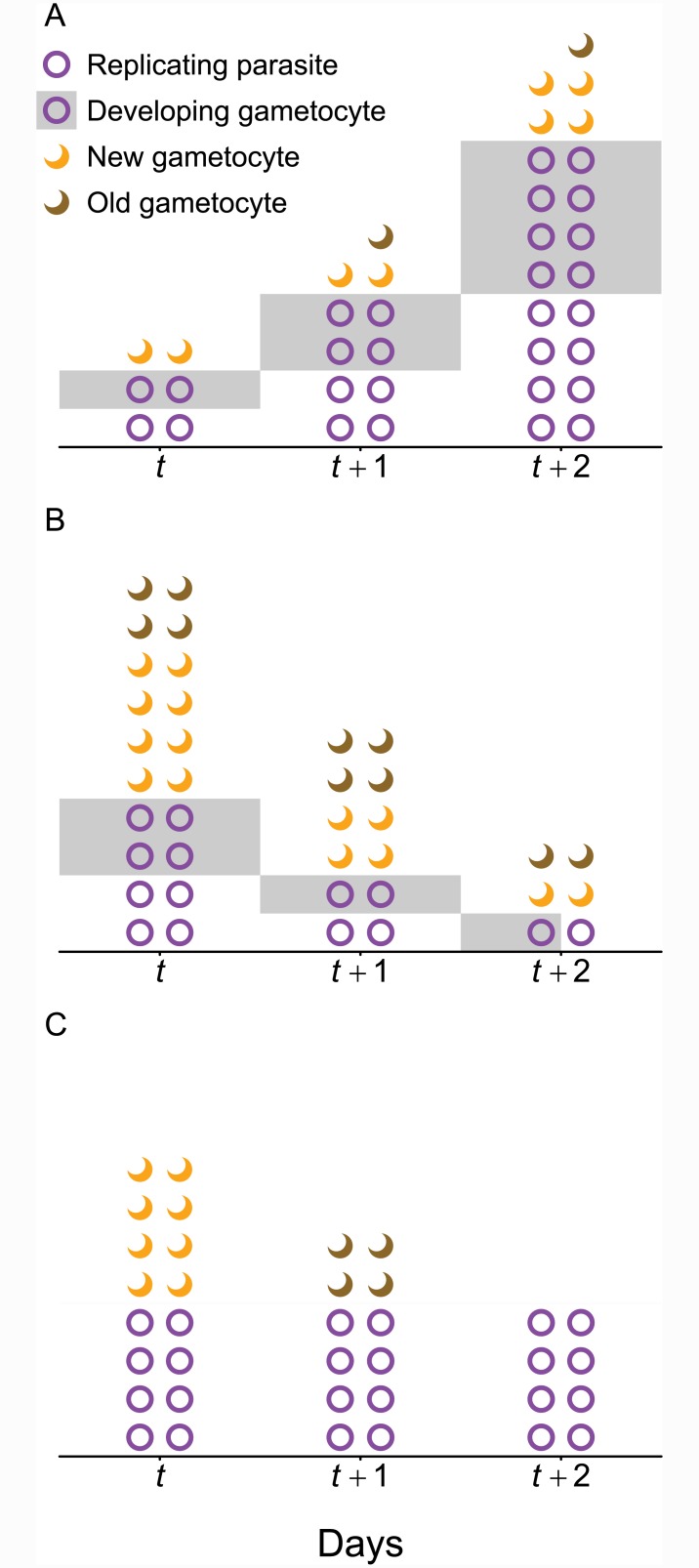Fig 1. Gametocyte numbers can increase (A) or decrease (B, C) even when transmission investment is constant over the time period observed.
For clarity, we assume that replication and gametocyte development both require one day and 50% of new gametocytes persist for an additional day (“Old gametocytes”). (A) Gametocyte numbers may increase because the parasite population is expanding, even though the percentage of each cohort committed to transmission remains 50%. That is, parasites in half of the newly invaded red blood cells (circles) will develop into gametocytes (gray shading) while in the other half (unshaded), parasites will replicate and each generate four newly invaded red blood cells the following day. (B) In contrast, if the parasite population is declining so that only half the parasites can replace themselves (for example, because red blood cells have been depleted), gametocyte numbers can decrease while the transmission investment remains constant at 50%. (C) Alternately, the gametocytes observed on a given day (e.g., t, t + 1) may have been produced by previous cohorts with no ongoing transmission investment (and hence no developing gametocytes) during the time period observed. In this case, gametocyte numbers are declining due to mortality rather than any change in transmission investment during the observation window. We use circles to indicate both replicating parasites and developing gametocytes since those forms are often indistinguishable in P. chabaudi; likewise, crescents indicate both newly-matured and ‘old’ gametocytes generated by previous cohorts since those cannot be differentiated in either P. chabaudi or P. falciparum.

